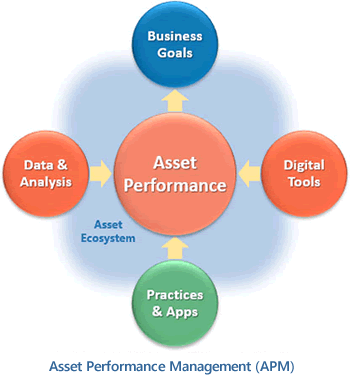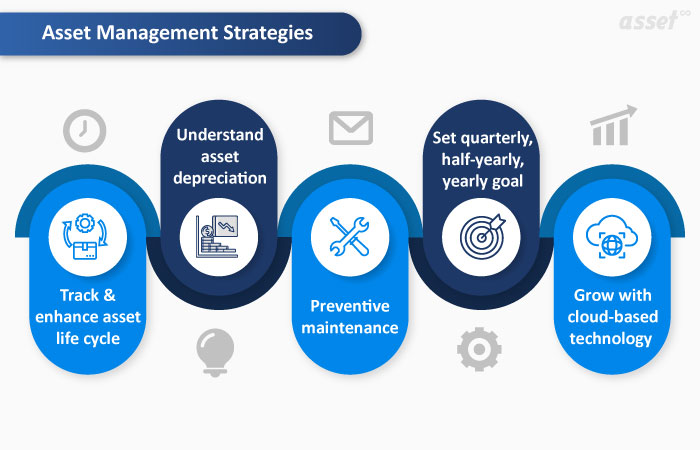Strategies Of Asset Management Optimizing Value And Achieving Organizational Objectives Asset operation refers to the strategic and methodical approach of overseeing, acquiring, maintaining, and disposing of means to optimize their value and achieve organizational pretensions. Effective asset operation involves a holistic understanding of colorful asset classes, including fiscal means, physical means, real estate, and intellectual property. This composition explores the significance of asset operation, its elaboration over time, and the crucial principles and strategies employed in asset operation moments.
The Importance of Asset Management
Asset operation is pivotal for individualities, businesses, and associations across colorful sectors. It refers to the methodical approach of acquiring, operating, maintaining, upgrading, and disposing of means to maximize their value and achieve strategic objectives. means can include physical means similar to structures, outfits, and structure, as well as impalpable means like intellectual property, software licenses, and brand character. Then are some crucial reasons why asset operation is important
Crucial Principles of Asset Management
To effectively manage means, asset directors cleave to several crucial principles
Lifecycle Planning
Asset directors apply strategies to optimize the lifecycle of means. This includes determining the applicable time for accession, conservation, and disposal of means to maximize their value and minimize costs.

Regulatory Compliance
Asset directors remain up-to-date with applicable laws, regulations, and assiduity norms to ensure compliance. This includes clinging to counting principles, duty regulations, environmental regulations, and ethical norms.
Optimal Resource Allocation
Effective asset operation helps in allocating coffers efficiently. By having a comprehensive understanding of the means within an association, directors can form informed opinions about resource allocation, such as when to invest in new means, how to prioritize conservation and repairs, and when to retire or dispose of underperforming means. This leads to better application of coffers and cost savings.
Improved Asset Performance
Asset operation involves covering the performance of means and enforcing measures to optimize their performance. Regular conservation, examinations, and upgrades can help breakdowns, extend asset lifetime, and ensure means operate at their optimal position. This minimises time-out, enhances trustability, and improves productivity and functional effectiveness.
Risk Management
Effective asset operation includes assessing and mollifying pitfalls associated with means. pitfalls can include outfit failure, nonsupervisory compliance, safety hazards, and fiscal pitfalls. By relating and managing pitfalls proactively, associations can minimize the liability and impact of implicit dislocations, cover their character, and ensure compliance with applicable regulations and norms.
Cost Control
Asset operation helps in controlling costs associated with asset power and operation. By having accurate data on asset lifecycle costs, including accession, conservation, form, and disposal costs, associations can make informed opinions regarding capital investments, conservation strategies, and seller selection. This leads to cost optimization, better budgeting, and better fiscal performance.
Strategic Decision Making

means are frequently critical to achieving an association’s strategic objectives. Effective asset operation provides decision-makers with the necessary information to align asset investments with organizational pretensions. It enables them to prioritize means grounded on their strategic significance, estimate indispensable investment options, and determine the stylish course of action to maximize value and support long-term growth.
Regulatory Compliance
numerous diligence are subject to nonsupervisory conditions about asset operation. These regulations may include asset shadowing, conservation records, environmental norms, and safety guidelines. By enforcing robust asset operation practices, associations can ensure compliance with applicable regulations, avoid penalties, and maintain a positive character.
Enhanced Sustainability
Asset operation contributes to sustainable practices by optimizing resource application, minimizing waste and emigrations, and extending asset lifetime. By espousing sustainable asset operation strategies, associations can reduce their environmental footmark, enhance their social responsibility, and meet the prospects of stakeholders who prioritize sustainability.
Asset operation plays a vital part in optimizing resource allocation, perfecting asset performance, managing pitfalls, controlling costs, supporting strategic decision timber, icing nonsupervisory compliance, and promoting sustainability. By enforcing effective asset operation practices, associations can maximize the value of their means and achieve their overall objectives.

The Elaboration of Asset Management
The field of asset operation has witnessed significant developments over time. In the early 2000s, asset operation was generally concentrated on fiscal means, similar to stocks, bonds, and collective finances. Still, with the adding recognition of the value of-financial means, similar to real estate, structure, and intellectual property, asset operation practices expanded to encompass a broader range of means.
also, the rapid-fire advancement of technology and the vacuity of sophisticated logical tools have revolutionized asset operation processes. The emergence of big data analytics, artificial intelligence, and machine literacy algorithms has enabled asset directors to make data-driven opinions, optimize portfolios, and identify investment openings more efficiently.
Asset Management Strategies

Asset operation strategies vary depending on the nature of means and organizational objects. Asset operation strategies relate to the approaches and methodologies associations employ to effectively manage their means.
These strategies are designed to optimize asset performance, minimize pitfalls, control costs, and align asset operation practices with organizational pretensions. Then are some generally used asset operation strategies preventative conservation Strategies?
This strategy focuses on performing regular conservation conditioning to help asset failures and optimize performance. It involves conducting routine examinations, servicing, and repairs grounded on manufacturer guidelines or destined schedules. preventative conservation helps identify and address implicit issues before they escalate, reducing time-out and extending asset lifetime.
Prophetic Conservation Strategy
Prophetic conservation utilizes data and analytics to prognosticate when conservation should be performed on means. It involves covering asset conditions, collecting data on performance pointers, and using prophetic algorithms or machine literacy to identify patterns and prognosticate asset failures. By detecting early warning signs, associations can record conservation conditioning proactively, optimize conservation coffers, and avoid unanticipated breakdowns.
Threat-grounded Conservation Strategy
This strategy prioritizes conservation conditioning grounded on the position of threat associated with means. It involves assessing the criticality of means, assessing implicit pitfalls, and allocating conservation coffers consequently. means with advanced threat situations admit further frequent and ferocious conservation, while lower-threat means may suffer lower frequent or less ferocious conservation. This strategy ensures that conservation sweats are concentrated on means that have the most significant impact on operations.

Trustability- centered conservation( RCM) Strategy
RCM is a methodical approach that identifies the most effective conservation tasks for each asset. It involves assaying asset failure modes, determining the consequences of failures, and opting for applicable conservation conduct to alleviate those failures. RCM aims to optimize conservation sweats by fastening on critical means and acclimatizing conservation tasks to the specific requirements of each asset. It helps associations achieve the asked balance between conservation costs and asset performance.
Asset relief Strategy
This strategy involves determining the optimal timing for asset relief or upgrade. It considers factors similar to asset condition, performance, technological advancements, and profitable viability. Organizations assess the costs and benefits of continuing to operate an asset versus replacing it with a newer or more effective volition. The asset relief strategy ensures that means are retired or upgraded at the right time to maintain functional effectiveness and avoid inordinate conservation costs.
Asset Performance Monitoring Strategy
This strategy involves real-time monitoring and analysis of asset performance data. It includes using detectors, telemetry, and other monitoring technologies to collect data on asset conditions, functional parameters, and performance pointers. By continuously covering asset performance, associations can identify diversions from anticipated performance, describe implicit issues beforehand on, and take visionary measures to optimize asset performance and help failures.
Asset Portfolio Optimization Strategy

This strategy focuses on optimizing the overall composition of an asset portfolio. It involves assaying the composition of means, their performance, and their alignment with organizational pretensions. Organizations may identify openings to divest underperforming means, acquire new means, or reallocate coffers to maximize the value and strategic fit of the asset portfolio.
Technology Adoption Strategy
This strategy involves using technology results to enhance asset operation practices. It includes enforcing asset operation software, exercising Internet of Effects ( IoT) bias for asset monitoring, employing data analytics tools for prophetic conservation, and espousing asset tracking systems. Technology relinquishment enables associations to automate processes, ameliorate data delicacy, and gain practicable perceptivity for effective decision- timber.
These asset operation strategies aren’t mutually exclusive and can be combined or customized based on the specific requirements and characteristics of an association’s means. An effective asset operation strategy considers factors similar to asset criticality, threat forbearance, fiscal constraints, and organizational objects to optimize asset performance and achieve asked issues.
Conclusion
Asset operation has evolved significantly in recent times, driven by technological advancements and the recognition of the value of different asset classes. By espousing effective asset operation strategies and principles, individualities, and associations can optimize asset performance, alleviate pitfalls, and achieve long-term fiscal objects. As global frugality continues to evolve, asset operation will remain a critical discipline for maximizing returns and icing sustainable growth.





